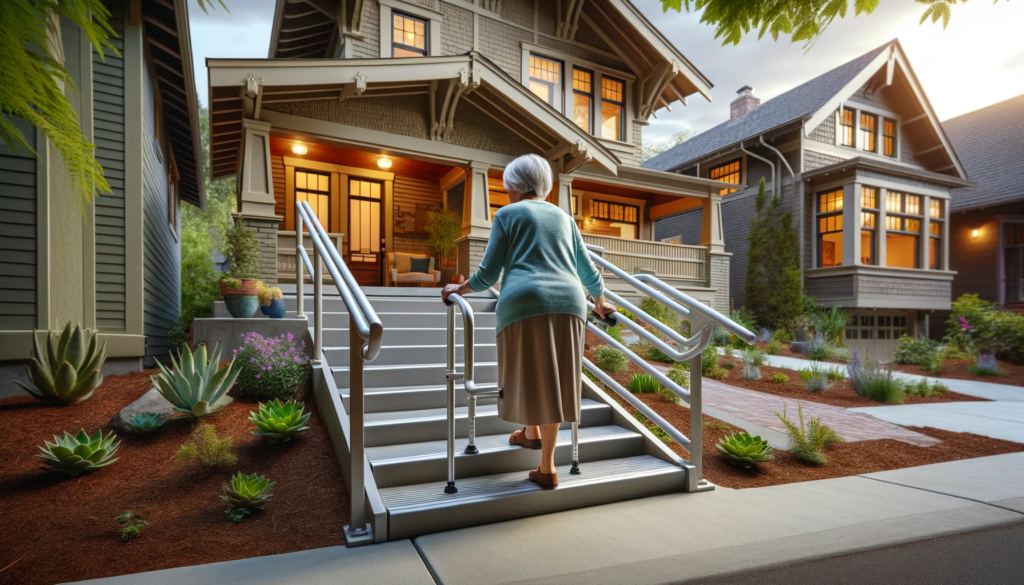Table of Contents
As our loved ones age, their health and well-being become a growing priority. One proactive step stands out for its importance: scheduling a yearly physical for our elderly loved ones. This annual health check-up is more than just a routine examination. These check-ups can open doors to specialized services like physical therapy, which can be pivotal in enhancing the daily lives of our seniors.
Physical therapy offers a path to improved mobility and reduced risk of falls, common concerns in the aging population. It's about empowering our elders, helping them retain their independence, and ensuring their days are filled with comfort and dignity. However, accessing these vital services often begins with a simple yet essential step – a referral from your doctor.
In Georgia, we have direct access to physical therapy, so you could schedule and evaluation with a PT and avoid the trip to the doctor. That being said, the yearly physical is a good idea and the referral to PT makes things easier.
This blog post is dedicated to showing the impact that these annual check-ups can have. We look at why they are essential, what you can expect during these visits, and how to ask for a referral for physical therapy. This simple appointment can help our loved ones maintain higher quality of life for longer while aging in place.

Recognizing when a loved one might benefit from physical therapy is a crucial step. The truth is almost everyone over sixty-five would benefit from a yearly bout of physical therapy.
With age comes increased physical challenges including joint stiffness and decreased balance and mobility. These factors can pose a risk to the independence of our seniors.
Physical therapy can be a game-changer here, offering strategies and exercises specifically tailored to their needs. Key signs that indicate the need for physical therapy include difficulty rising from a chair, any fall, or a general decline in physical activity.
These issues, often age-related, can be mitigated through targeted physical therapy, which not only improves mobility but also reduces the risk of falls. By understanding these signs and acknowledging the role of physical therapy in fall prevention, caregivers can take proactive steps to ensure their elderly loved ones maintain their strength and vitality.
The yearly physical is an opportunity to assess the overall health of your elderly loved one and discuss the need for physical therapy. During this check-up, doctors typically review key health indicators such as blood pressure, heart rate, and cognitive function. It's a general evaluation of the senior's health status.
Caregivers should use this opportunity to discuss any observed physical decline and request a referral for physical therapy. This appointment is the perfect time to advocate for your loved one’s health and ask for professional advice on maintaining quality of life.

These check-ups aid in early detection of health conditions, which is crucial for timely intervention. Conditions like arthritis, osteoporosis, or heart problems, if caught early, can be managed more effectively.
Another significant aspect of these check-ups is the review and management of medications. Seniors often take multiple medications, and a yearly review helps in adjusting dosages and avoiding potential drug interactions.
Regular check-ups thus ensure that seniors are not only physically healthy but also receiving the right treatments and therapies for their age and condition.

Preparing for the yearly physical involves more than just marking a date on the calendar. It's about being ready with a list of concerns and observations about the senior's health.
Caregivers should note any changes in mobility, balance issues, or other health-related concerns. Discussing these observations with the doctor can lead to a more targeted health evaluation.
After receiving a physical therapy referral, the next step is coordinating this new aspect of care. This involves deciding on therapy location, scheduling sessions, and possibly making arrangements for transportation to and from appointments.
It's important to find a therapist who not only has the right expertise but also a good rapport with the senior. Honestly 95+% of the time, people have a great experience with therapy and their therapist.
Coordination of care also includes ensuring that the therapy aligns with other medical treatments and overall care objectives. Regular communication with the physical therapist and monitoring the senior's progress are important.

This proactive approach ensures that physical therapy becomes a seamless part of the senior’s overall care plan, contributing positively to their health and independence.
Scheduling a yearly physical for your elderly loved one and understanding its role in accessing physical therapy services is a proactive approach to elder care. It’s an effective strategy to ensure that seniors not only maintain their physical health but also enjoy a high quality of life.
Through these check-ups, caregivers can stay informed about the health status of their loved ones and make timely decisions about incorporating beneficial services like physical therapy.
This comprehensive approach to health care planning is essential in helping seniors maintain their independence and vitality, ultimately enhancing their overall well-being.
That's all for today.
Take care, keep mom safe at home and have a great day!
Winn